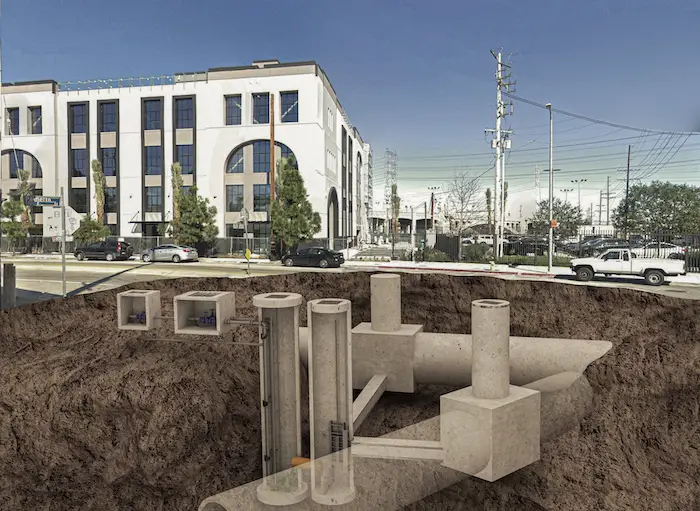Los Angeles recently broke work on a Low Flow Diversion project to redirect about one million gallons of water per day of dirty urban runoff away from the ocean and into existing sanitary sewers. The US$13 million Low Flow Diversion project will build new water filtration equipment to eliminate waste flows from five sub-watersheds of the Los Angeles and Arroyo Seco rivers. The design company Stantec is leading the project, which began in July, in conjunction with the Los Angeles Department of Public Works Bureau of Engineering (BOE) and the Los Angeles Sanitation & Environment Department (LASAN). The LA River flows 51 miles from the mountains north of Los Angeles to the coast in Long Beach, while the Arroyo Seco is a seasonal stream that extends 25 miles from the San Gabriel Mountains to Los Angeles’ Elysian Park.
Also Read: New Weingart Tower to cater to the homeless in Los Angeles
Multiple contaminants in dry-weather flows have a detrimental influence on both the LA River and the Arroyo Seco. According to project authorities, high levels of bacteria in the two rivers can sometimes equal those seen in wastewater. When finished in November 2022, the project will redirect about one million gallons per day from storm drains into existing sanitary sewers and then to the City’s Hyperion Water Reclamation Plant for treatment. The Hyperion plant recently had a significant blockage, flooding the facility and forcing it to discharge 17 million gallons of untreated effluent into Santa Monica Bay on July 11.
Local people became ill as a result of potentially hazardous smells from the under-repair facility, and the LA County Department of Health recommended impacted households to stay indoors as much as possible. “This is a single design project with two construction packages,” Seth Carr, project engineer for the LASAN Watershed Protection Division, explains. “The LA River LFDs have three locations, while the Arroyo Seco has two.” They were divided into two bundles based on the location of discharge.”

